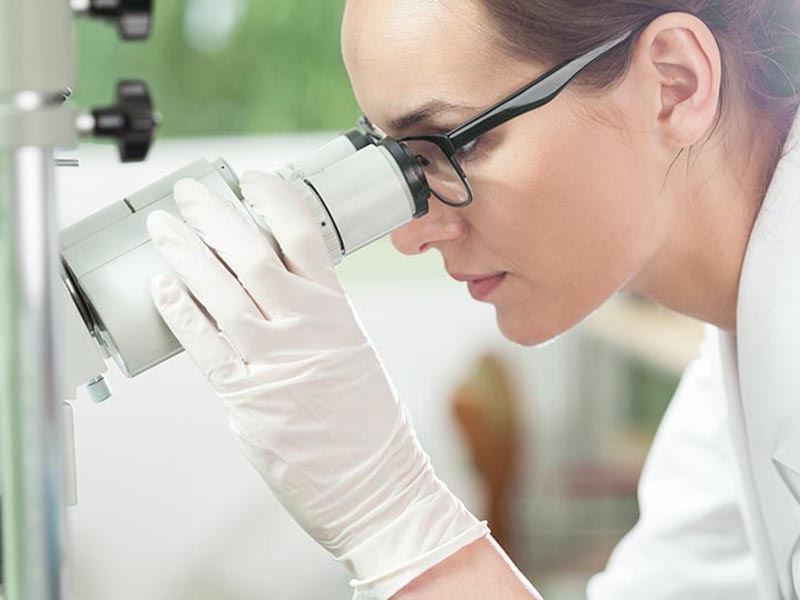
Colposcopy
Watch our video about Colposcopy
Colposcopy is a diagnostic procedure used to examine the cervix, vagina, and vulva for abnormalities. It is performed with a colposcope, a specialized magnifying instrument that allows the doctor to detect abnormal cells, infections, and lesions that may require further evaluation.
This test is typically recommended when Pap smear results indicate abnormalities, helping healthcare providers determine the presence of precancerous or cancerous conditions. Colposcopy is minimally invasive and performed in an outpatient setting, making it a safe and effective tool for early diagnosis.
What is Colposcopy Used For?
Colposcopy is used for:
- Investigating abnormal Pap smear results.
- Detecting precancerous lesions and cervical cancer.
- Diagnosing HPV-related conditions, such as genital warts and cervical dysplasia.
- Evaluating unexplained vaginal bleeding or pain.
- Assessing inflammation or infections of the cervix and vaginal walls.
- Monitoring previously treated cervical abnormalities.
- Guiding Biopsy procedures for further examination.
This procedure allows early detection and timely treatment, reducing the risk of serious gynecological conditions.
How Does Colposcopy Work?
The colposcopy procedure follows these steps:
- Preparation: The patient lies on an examination table in a similar position to a pelvic exam. A speculum is inserted into the vagina to allow clear visualization of the cervix.
- Colposcope Examination: The doctor places a colposcope outside the vagina and directs light toward the cervix for magnified imaging.
- Application of Special Solutions: A mild acetic acid (vinegar) solution or iodine may be applied to highlight abnormal tissues.
- Biopsy (if necessary): If any suspicious areas are found, a small tissue sample (biopsy) is taken for laboratory analysis.
The procedure usually takes 10 to 20 minutes and may cause mild discomfort but is generally painless.
Types of Colposcopy
There are different types of colposcopy, depending on the purpose and technique used.
1. Standard Colposcopy
A Standard Colposcopy involves examining the cervix, vagina, and vulva using a colposcope without additional procedures.
This method is commonly performed as a follow-up for abnormal Pap tests and is used to detect infections, inflammation, or early signs of precancerous changes. It is a non-invasive, quick, and routine procedure.
2. Colposcopy with Biopsy
If abnormal areas are detected during colposcopy, a biopsy may be performed to obtain a tissue sample for laboratory testing.
The biopsy helps determine whether the abnormal cells are benign, precancerous, or cancerous. Although mild cramping or spotting may occur after the biopsy, the procedure is generally well-tolerated.
3. High-Resolution Colposcopy
A High-Resolution Colposcopy provides enhanced imaging using digital magnification and specialized lighting techniques.
This method allows for more detailed evaluation of small or hard-to-detect abnormalities and is especially useful for patients with high-risk HPV strains or previous cervical abnormalities.
What Conditions Can a Colposcopy Detect?
Colposcopy helps diagnose a variety of gynecological conditions, including:
- Cervical Dysplasia (Precancerous Cells) – Identifies abnormal cell growth that may develop into cancer if untreated.
- Cervical Cancer – Detects early-stage cervical cancer for timely intervention.
- HPV Infections and Genital Warts – Assesses HPV-related lesions and viral activity.
- Cervicitis (Cervical Inflammation) – Diagnoses infections or irritations of the cervix.
- Vaginal and Vulvar Lesions – Identifies abnormalities in the vaginal walls and external genitalia.
- Polyps and Benign Growths – Detects non-cancerous growths that may cause discomfort or bleeding.
- Chronic Infections or Post-Treatment Monitoring – Evaluates healing and recurrence risks after gynecological treatments.
When is a Colposcopy Recommended?
A colposcopy is recommended in various medical situations, including:
- Abnormal Pap Smear Results – To further investigate atypical or high-risk cell changes.
- Positive HPV Test – To check for precancerous lesions caused by HPV.
- Unexplained Vaginal Bleeding – To rule out infections, polyps, or cancer.
- Pelvic Pain or Discomfort – To examine inflammatory conditions or cervical abnormalities.
- Visible Cervical Lesions – If an irregularity is detected during a routine pelvic exam.
- Recurrent Gynecological Infections – To identify underlying chronic conditions.
- Monitoring After Cervical Treatments – To ensure successful recovery after procedures like LEEP or cryotherapy.
Pre and Post-Colposcopy Care
Before the Colposcopy:
- Avoid sexual intercourse, tampon use, and vaginal douches for 24 to 48 hours before the exam.
- Schedule the procedure outside of your menstrual period for clearer imaging.
- Inform your doctor if you are pregnant or have any bleeding disorders.
After the Colposcopy:
- Mild spotting or discharge is normal, especially if a biopsy was taken.
- Avoid sexual activity, tampons, or douches for 3-5 days if a biopsy was performed.
- Follow up with your doctor to discuss results and necessary treatments.
Contraindications for Colposcopy
While colposcopy is safe and well-tolerated, it may not be recommended in the following cases:
- During heavy menstruation, as it may obscure visualization.
- Patients with an active vaginal infection that could interfere with results.
- Severe cervical stenosis, which may limit access to the cervix.
- Recent cervical surgery, requiring time for healing before the exam.
In such cases, alternative diagnostic methods may be considered.
Alternatives for Patients Who Cannot Undergo Colposcopy
For individuals who cannot undergo a colposcopy, alternative screening and diagnostic options include:
- HPV Testing – A lab test to detect high-risk HPV strains.
- Pelvic Ultrasound – To assess reproductive organ health without direct cervical examination.
- Endometrial Biopsy – A procedure to evaluate uterine abnormalities.
Schedule Your Colposcopy at Clinic Consultation
Colposcopy services are available at Clinic Consultation, performed with advanced technology and expert care to ensure accurate diagnosis and early detection of cervical abnormalities.
📅 Book your colposcopy appointment today and take proactive steps toward your gynecological health!
Click here to schedule an appointment online